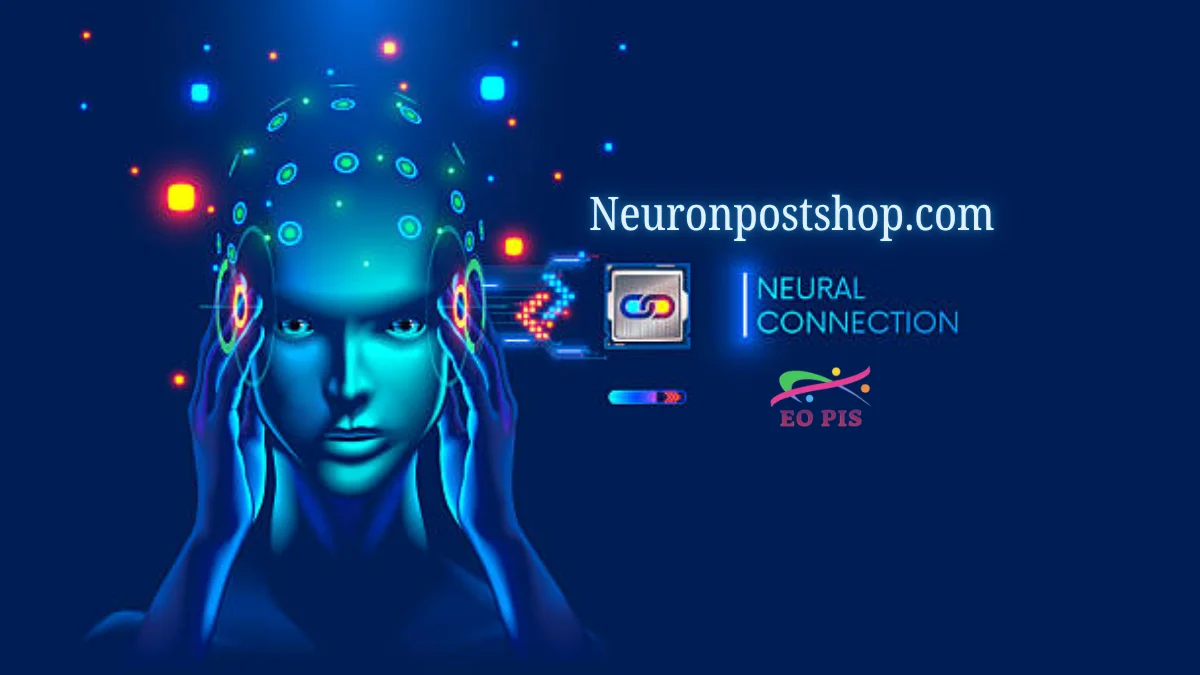Technology
Keezy.co Guru Benjamin: Shaping Tech Trends with Sharp Insight

Introduction to Keezy.co Guru Benjamin
In a world where technology evolves at lightning speed, having the right insights can make all the difference. Enter Keezy.co Guru Benjamin—a name synonymous with sharp analysis and forward-thinking predictions in the tech landscape. His ability to dissect trends and foresee changes has made him a beacon for entrepreneurs, tech enthusiasts, and industry leaders alike. As we dive into his journey and influence on emerging technologies, you’ll discover how one individual is shaping the future of innovation. Get ready to explore what makes Keezy.co Guru Benjamin an essential voice in today’s digital age!
What is Keezy.co Guru Benjamin?
Keezy.co Guru Benjamin is a visionary in the tech landscape. He blends expertise with an unwavering curiosity about emerging trends. His insights shape how we understand technology’s role in our lives.
At Keezy.co, Benjamin serves as a thought leader and strategist. He dives deep into innovations that redefine industries and consumer behavior. Whether it’s artificial intelligence or blockchain, his analysis resonates across various sectors.
His passion for technology extends beyond mere observation; he actively engages with communities to foster growth and learning. Through blogs, podcasts, and webinars, he shares knowledge that empowers others.
Benjamin’s approach is both analytical and creative. With every prediction or insight shared on Keezy.co, he illustrates the potential of technology to enhance society while addressing its challenges head-on.
The Evolution of Technology and Its Impact on Society
Technology has transformed our lives in ways we never could have imagined. From the invention of the wheel to today’s artificial intelligence, each breakthrough reshapes how society functions.
Consider communication. The shift from letters to instant messaging connects us globally at lightning speed. We can share ideas and cultures with a click.
Then there’s information access. The internet democratizes knowledge, allowing anyone with a connection to learn about almost anything. This shift empowers individuals but also challenges traditional institutions.
Workplaces are evolving too. Automation streamlines processes but raises questions about job displacement and skill requirements for future employees.
Social dynamics have changed dramatically as well. Technology influences relationships, often blurring lines between online personas and real life, impacting mental health in various ways.
Each advancement brings opportunity alongside its own set of challenges that society must navigate carefully as it continues to evolve technologically.
How Keezy.co Guru Benjamin Became a Tech Guru?
Benjamin’s journey to becoming Keezy.co Guru is nothing short of inspiring. It began with a deep fascination for technology at a young age. He spent countless hours tinkering with gadgets and software, often pushing boundaries that others hesitated to explore.
His educational background laid the foundation for his future success. Graduating from a top university in computer science, he developed critical thinking skills and technical expertise. This knowledge fueled his passion even further.
Networking played a crucial role in Benjamin’s ascent within the tech community. He attended industry events, sought mentorships, and collaborated on innovative projects. These experiences broadened his insights into emerging technologies.
Before long, Benjamin had earned recognition as an expert voice in tech innovation through blog posts and speaking engagements. His unique perspective attracted attention from startups seeking guidance on navigating the rapidly evolving landscape of technology.
Keezy.co’s Mission: Providing Cutting-Edge Insight
Keezy.co thrives on its mission to deliver cutting-edge insights that empower individuals and businesses alike. At the heart of this initiative lies a commitment to staying ahead of the curve in an ever-evolving tech landscape.
By analyzing emerging trends, Keezy.co provides valuable information that helps users navigate complex technological shifts. This focus ensures that their audience remains informed and ready for what’s next.
The team at Keezy.co harnesses diverse expertise, blending creativity with data-driven analysis. They curate content that is not only relevant but also actionable, giving readers tools to adapt and innovate.
Moreover, Keezy.co fosters a community where knowledge-sharing flourishes. Engaging discussions and forums allow tech enthusiasts to connect and explore ideas collaboratively.
In essence, the mission is about more than just insight; it’s about crafting a future where technology serves as a catalyst for positive change across industries.
Benjamin’s Predictions for Upcoming Tech Trends
Benjamin has a knack for spotting the next big thing in tech. His insights often come from analyzing emerging patterns and consumer behaviors.
One of his notable predictions is the rise of artificial intelligence across various industries. He believes AI will not just automate tasks but also enhance creative processes, making it a vital tool for innovation.
He’s also keeping an eye on blockchain technology beyond cryptocurrencies. Benjamin sees potential in its application for secure data sharing and transparency across sectors like healthcare and supply chain management.
Sustainable tech is another trend he champions. As environmental concerns grow, innovations that reduce carbon footprints will likely reshape how companies operate.
Moreover, with remote work becoming more permanent, tools enhancing virtual collaboration are set to evolve significantly. According to Benjamin, this shift will redefine workplace dynamics forever.
Advice for Aspiring Tech Entrepreneurs
Starting a tech venture requires more than just an idea. It’s about execution and adaptability. Research your market thoroughly before you launch anything. Understand what people need and find gaps that others overlook.
Surround yourself with the right team. Diverse perspectives can spark innovation, leading to breakthroughs you might not achieve alone. Collaboration is key in this fast-paced industry.
Don’t be afraid of failure; it’s part of the journey. Learn from each setback, refine your approach, and keep pushing forward.
Networking is crucial too; connect with mentors who inspire you. They can provide invaluable insights that save time and resources.
Stay curious! Embrace emerging technologies and trends but remain grounded in your core mission. This balance will help navigate challenges while staying true to your vision as a tech entrepreneur.
Conclusion: Keezy.co Guru Benjamin Continued Influence on the Tech Industry
Keezy.co Guru Benjamin continues to shape the tech landscape with his sharp insights and innovative vision. His ability to forecast trends not only informs industry leaders but also inspires budding entrepreneurs. With each passing day, his influence grows as he engages with a broad audience eager for knowledge.
Benjamin’s contributions extend beyond mere predictions; they serve as crucial guidance for navigating the complexities of today’s technology-driven world. As new challenges arise, his expertise provides clarity and direction, making him a vital figure in tech discussions.
The journey of Keezy.co Guru Benjamin is far from over. He stands at the forefront of technological evolution, ready to tackle emerging issues and opportunities alike. For anyone looking to understand where technology is headed, keeping an eye on Benjamin will prove invaluable. The future holds exciting possibilities, and with thought leaders like him leading the charge, there’s much to anticipate in this ever-changing arena.
Discover new passions and endless possibilities today only on EO PIS.
Technology
How Next-Generation Payroll Technology Is Redefining the Workplace

Key Takeaways
- Artificial Intelligence (AI) and machine learning are revolutionizing payroll processes, enhancing efficiency and accuracy.
- Cloud-based payroll systems provide scalability and real-time data access, enabling seamless support for remote work environments.
- On-demand pay options are gaining popularity, offering employees immediate access to their earned wages.
- Global payroll solutions are essential for businesses with international workforces, ensuring compliance across multiple jurisdictions.
The Rise of AI in Payroll Processing
Modern businesses are witnessing a fundamental shift in payroll management as artificial intelligence (AI) emerges as a key player. No longer just a back-office function, payroll is increasingly strategic, offering opportunities to streamline complex tasks and minimize manual errors. For organizations seeking an edge, turning to a trusted payroll services provider now means leveraging advanced tools driven by AI and machine learning. AI-driven payroll systems are capable of automating routine and repetitive activities, such as data validation, payroll calculations, and compliance checks. These systems not only decrease the likelihood of human error but also provide predictive analytics that help organizations forecast costs and manage headcount more effectively. Payroll technology offers transparent, auditable records, allowing finance executives to analyze patterns and trends in workforce compensation with minimal effort. Companies that utilize automated payroll processes report a significant reduction in workload, enabling payroll specialists to focus on value-added, strategic initiatives. According to their research, top payroll solution providers automate nearly 70% of payroll processes and reduce costs by up to 71% through the use of AI and emerging technologies.
Embracing Cloud-Based Payroll Solutions
One of the most significant innovations transforming the payroll landscape is cloud-based technology. Unlike traditional on-premise systems, cloud payroll offers accessibility and scalability essential for supporting today’s distributed and remote workforce. Data is updated in real-time, which minimizes payment delays or errors due to last-minute schedule changes. The flexibility of cloud-based systems enables employers to scale their payroll operations rapidly as their business grows, without incurring significant additional investment in hardware or software. This access is particularly beneficial for HR teams that require seamless integration with other human resources and finance platforms, offering a unified approach to workforce management. Workflow automation features built into cloud systems free up time for payroll specialists, enabling them to focus on people-related strategy, rather than on repetitive administrative tasks. Cloud-based platforms also enhance data security and disaster recovery measures, reducing risk and building organizational resilience.
The migratory trend toward cloud solutions is more than a passing phenomenon. Decision-makers are increasingly recognizing cloud payroll as essential to achieving digital transformation objectives. Adopting cloud HR and payroll systems leads to improved flexibility, lower IT overhead, and a better end-user experience — all critical in the rapidly evolving business landscape. The ability to update systems and deploy security features remotely makes cloud payroll a preferred option for many companies, especially those with global operations.
On-Demand Pay: Meeting Employee Expectations
Gone are the days when employees were content waiting for a bi-weekly paycheck. The concept of on-demand pay is disrupting the traditional pay cycle, enabling employees to access their earned wages instantly. This trend is rapidly gaining traction — a report by ADP illustrates that over three-quarters of employees would value this feature, with executives viewing it as a powerful tool for both attracting and retaining talent. On-demand pay programs provide greater financial flexibility, empowering staff to better manage urgent expenses and unexpected costs without resorting to high-interest loans or credit cards. By giving workers more autonomy over their finances, organizations can enhance overall job satisfaction, reduce financial stress, and improve their reputation as employee-friendly workplaces. On-demand pay also benefits employers by reducing turnover and increasing engagement, as employees are more likely to stay with organizations that prioritize their financial well-being.
Global Payroll Solutions for a Diverse Workforce
As businesses continue to build international teams, the complexity of payroll compliance grows. Each country brings its own legal requirements for taxes, benefits, and reporting procedures. Global payroll solutions are designed to keep pace with this complexity, automatically updating to reflect changes in local laws, allowing HR and payroll departments to focus on their core responsibilities. Modern global payroll platforms offer the structure necessary for seamless, compliant processing, regardless of employees’ locations. Leading providers support multi-country payroll processing, ensuring automatic alignment with diverse regulations and labor laws across multiple countries. With real-time data translation and simplified currency conversion, these systems minimize the risk of costly errors that often occur in cross-border payments. This comprehensive approach enables businesses to confidently tap into global talent pools, knowing that local compliance requirements are consistently met.
Integrating AI for Enhanced Compliance
Compliance remains at the heart of effective payroll management. As regulation changes accelerate, organizations must keep pace or risk costly penalties and reputational harm. Keeping up with evolving regulations, from local labor rules to national tax codes, is a significant challenge—especially for multinational companies. Advanced payroll technology leverages AI to parse labor law updates, interpret regulations, and automatically apply changes to payroll processes. This AI-driven compliance management significantly reduces the administrative burden and improves the precision of payroll runs. With AI, payroll teams can proactively identify anomalies, ensure timely filings, and support audits with accurate, real-time data. This streamlining simplifies what was often a fragmented and manual process, saving businesses considerable time and reducing compliance-related stress. Major publications have highlighted this technology as a game-changer for multinational organizations facing regulatory complexity.
Enhancing Employee Experience with Self-Service Portals
The digital transformation of payroll is not just about operational efficiency; it’s also about elevating the employee experience. Today’s payroll systems empower staff with easy-to-use self-service portals. Employees can securely access their payslips, update personal details, and download essential documents at any time, from anywhere. Changes to direct deposit, tax withholding, or benefits coverage can often be completed in minutes, reducing delays and preventing administrative bottlenecks. These interactive dashboards minimize HR’s administrative workload and foster a culture of transparency. The result is not just a streamlined process, but a more engaged and informed workforce. With instant access to payroll histories, digital communication, and troubleshooting tools, employees become more independent and informed about their compensation and benefits, leading to higher satisfaction and fewer payroll-related inquiries.
Preparing for the Future of Payroll
To maintain a competitive edge in a rapidly changing marketplace, adopting advanced payroll technologies is now a strategic imperative. AI-driven automation, secure cloud platforms, on-demand pay, and global compliance capabilities collectively prepare organizations for the unpredictable future of work. By integrating these tools, payroll teams can significantly reduce processing times, minimize errors, and provide enhanced support to employees at every level of the organization. These investments yield dividends in accuracy, efficiency, and employee satisfaction.
Payroll is no longer just a business necessity — it’s a lever for transformation. By strategically integrating the latest technologies, companies can boost operational performance and cultivate a positive workplace culture. The future of payroll is being shaped by innovation, adaptability, and a relentless focus on the employee experience. Organizations that proactively embrace these changes will be best positioned to attract top talent, protect against regulatory risk, and thrive amid ongoing workforce shifts.
Technology
Music That Travels With You: Why StarStream Radio is Built for Life on the Go

In today’s fast-paced world, music is more than just background noise—it’s a companion, a motivator, and a source of inspiration. Whether you’re commuting, working, exercising, or just relaxing, having the right soundtrack can make all the difference. StarStream Radio – Powered by WLBC Mobile understands this need, which is why it’s built to deliver music wherever life takes you.
Here’s why StarStream Radio is the perfect app for listeners who want their music to go wherever they go.
1. Seamless Mobile Streaming
StarStream Radio is designed for mobile devices, ensuring smooth and reliable streaming no matter where you are. Unlike platforms that require complex setups or suffer from buffering issues, the app keeps your music flowing with minimal interruptions. From the first tap to hours of listening, the experience is simple, fast, and intuitive.
Whether you’re on a bus in London, driving through Toronto, or walking the streets of New York, your favorite stations are just a tap away.
2. A Station for Every Mood and Genre
Life on the go means your musical tastes can change with your mood. StarStream Radio meets this need with a variety of curated stations to match every moment:
- Alternative Rock 2010 to Now for energy and modern edge
- The Classic Rock Rewind for timeless guitar riffs and nostalgic anthems
- Rock 90s and 00s for grunge, alt-rock, and early 2000s hits
- The Vinyl Vibe for a vintage, warm sound
- The Country Crossroads for heartfelt storytelling and soulful melodies
No matter your preference, you can switch between stations seamlessly, creating the perfect soundtrack for any moment.
3. Accessible Across Borders
StarStream Radio isn’t limited by location. Listeners in the United States, United Kingdom, and Canada can all enjoy the same high-quality streaming experience. This global accessibility makes it easy to stay connected to your favorite music no matter where life takes you.
It’s ideal for frequent travelers, remote workers, or anyone who wants uninterrupted access to great music while exploring the world.
4. Quality Audio That Moves With You
The app doesn’t just make music available—it makes it enjoyable. StarStream Radio delivers clear, crisp audio that captures the full depth of every track. Whether you’re listening through headphones, car speakers, or portable devices, the sound quality is consistent and immersive.
It ensures that your music travels with you in a way that feels personal and engaging, turning every commute, workout, or quiet moment into an experience.
5. Easy to Use and Free
With StarStream Radio, there’s no need for complicated setups or premium subscriptions. The app is free to download and easy to navigate, letting you jump straight into the music you love. It’s designed for convenience without compromising on variety, quality, or authenticity.
Explore more posts built to give you fresh perspectives and actionable ideas fast.
Technology
neuronpostshop.com: Your Gateway to Tech and Gaming Innovations

Introduction to neuronpostshop.com
Welcome to the digital frontier where technology and gaming converge! If you’re on the hunt for the latest gadgets, innovative tech solutions, or must-have gaming gear, look no further than neuronpostshop.com. This online marketplace is more than just a shopping site; it’s a vibrant hub that connects enthusiasts and innovators alike. Whether you’re upgrading your setup or searching for cutting-edge accessories, neuronpostshop.com has got you covered. Step into a world filled with exciting possibilities and discover what makes this platform a go-to destination for tech lovers everywhere.
The History and Mission of neuronpostshop.com
Neuronpostshop.com began as a passion project, born from the love of technology and gaming. The founders wanted to create a hub where enthusiasts could find the latest innovations all in one place.
Since its inception, neuronpostshop.com has steadily evolved, adapting to the ever-changing landscape of tech advancements. With a keen eye on emerging trends, it strives to stay ahead of the curve.
The mission is clear: empower customers with top-notch products that enhance their digital experiences. Every item is carefully selected for quality and performance.
This platform aims not just to sell but also to inform and inspire gamers and tech lovers alike. By fostering a community around shared interests, neuronpostshop.com seeks to connect people through their mutual passion for innovation.
Products and Services Offered
Neuronpostshop.com boasts a diverse array of products tailored for tech enthusiasts and gamers alike. From cutting-edge gadgets to the latest gaming consoles, there’s something for everyone.
The website features high-performance laptops designed for intensive gaming and work tasks. These machines deliver speed and graphics that can take your gaming experience to new heights.
You’ll also find a unique selection of accessories like headsets, keyboards, and controllers. Each item is curated with quality in mind, ensuring users get the best performance possible.
Beyond hardware, neuronpostshop.com offers software solutions ranging from game titles to productivity tools. This blend ensures you stay ahead in both leisure and professional pursuits.
With user-friendly navigation on their site, finding what you need becomes an effortless task. The focus is not just on selling; it’s about enhancing your entire tech lifestyle through thoughtful selections.
Tech and Gaming Trends Featured on the Website
Neuronpostshop.com is a treasure trove for tech and gaming enthusiasts. The site showcases the latest innovations that are reshaping our digital experiences. From cutting-edge gaming consoles to high-performance accessories, there’s always something new to discover.
Stay ahead in the world of virtual reality with their curated selections of headsets and immersive games. The trends highlight seamless integration between hardware and software, ensuring an unparalleled experience for gamers.
For tech aficionados, smart home devices take center stage. Neuronpostshop.com features gadgets that enhance everyday living while showcasing efficiency and convenience.
Eco-friendly technology is also on the rise here. Sustainable products make a significant impact without compromising performance or style.
Explore these exciting trends at neuronpostshop.com, where innovation meets your shopping needs in one convenient place.
Benefits of Shopping on neuronpostshop.com
Shopping on neuronpostshop.com comes with a range of benefits that enhance your tech and gaming experience. First, the site offers a curated selection of cutting-edge products. You won’t just find the latest gadgets; you’ll discover hidden gems too.
The user-friendly interface makes navigation effortless. Whether you’re browsing for gaming accessories or looking to upgrade your PC components, everything is just a click away.
Another major advantage is their commitment to customer satisfaction. Fast shipping ensures that you receive your orders without unnecessary delays.
Competitive pricing also sets neuronpostshop.com apart from other retailers in the market. Regular promotions make it even easier to snag great deals on top-tier products.
A robust customer support system stands ready to assist you whenever needed, ensuring peace of mind throughout your shopping journey at neuronpostshop.com.
Customer Reviews and Testimonials
Customer reviews on neuronpostshop.com provide a valuable glimpse into the experiences of shoppers. Users frequently praise the variety and quality of tech gadgets available.
Many testimonials highlight prompt shipping times, ensuring that customers receive their purchases quickly. This focus on efficiency builds trust in the shopping experience.
Shoppers often mention exceptional customer service as a key reason for their loyalty. Friendly representatives are ready to help with any inquiries or issues that arise during the buying process.
Honest feedback about products helps new visitors make informed decisions. Many appreciate how detailed and accurate product descriptions are, enhancing confidence before making a purchase.
Positive ratings reflect not just satisfaction but excitement over discovering innovative items. Customers feel like they’re part of something bigger—a community passionate about technology and gaming advancements.
Upcoming Sales and Promotions
Get ready for some exciting news from neuronpostshop.com. The upcoming sales and promotions are set to take your tech and gaming experience to the next level.
Expect exclusive discounts on popular gadgets and accessories. Whether you’re a gamer or a tech enthusiast, there’s something for everyone.
Look out for flash sales that pop up unexpectedly. These limited-time offers can save you big bucks on cutting-edge products.
Don’t forget about seasonal promotions too! Major holidays will bring special bundles and deals that enhance value while celebrating your favorite tech trends.
Keep informed by signing up for newsletters or connecting via social media. This way, you won’t miss any of the latest announcements regarding these fantastic offers.
Ready yourself for an electrifying shopping journey with neuronpostshop.com as it gears up to deliver unparalleled savings!
Conclusion: Join the tech revolution with neuronpostshop.com?
As technology and gaming continue to evolve at a rapid pace, staying ahead of the curve is essential. neuronpostshop.com serves as your gateway to discover the latest innovations that can elevate your tech experience. With a diverse range of products and services tailored for enthusiasts like you, it’s easy to see why this platform has gained popularity.
Shopping on neuronpostshop.com not only allows access to cutting-edge gadgets but also connects you with valuable insights into emerging trends. The customer reviews further reinforce the quality and satisfaction associated with each purchase, ensuring you make informed decisions.
With frequent sales and exciting promotions, there’s always an opportunity for savings while exploring new technologies or enhancing your gaming setup. Embracing innovation has never been more accessible.
Join the community today. Explore what neuronpostshop.com has to offer and step into a world where technology meets passion. Your next great discovery awaits!
-

 General4 months ago
General4 months agoQuikernews.com: Redefining Real-Time Journalism in the Digital Age
-

 Technology4 months ago
Technology4 months agoPi123: Revolutionizing Data-Driven Decisions with High-Speed, High-Accuracy Math Engines
-

 Eo Pis3 months ago
Eo Pis3 months agoUnlocking the Power of EO PIs: A Personalized Path to Natural Wellness
-

 Entertainment4 months ago
Entertainment4 months agoPremiumIndo69: The Rise of an Exclusive Digital Ecosystem for Next-Gen Entertainment
-

 Eo Pis5 months ago
Eo Pis5 months agoWhat is EO PIs? Unveiling the Healing Power Behind Essential Oils
-

 General4 months ago
General4 months agoAvstarnews Contact Working Hours: Your Complete Guide to Reaching the Right Support at the Right Time
-

 Technology4 months ago
Technology4 months agoNewznav.com 8888996650: Unmasking the Mysterious Digital Duo Reshaping News and Communication in 2025
-

 Eo Pis5 months ago
Eo Pis5 months agoEO PIs: Discover the Secret Ingredients Powering Aromatherapy



